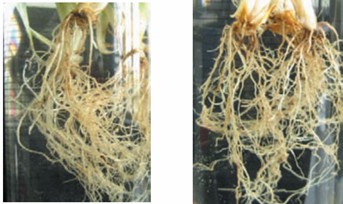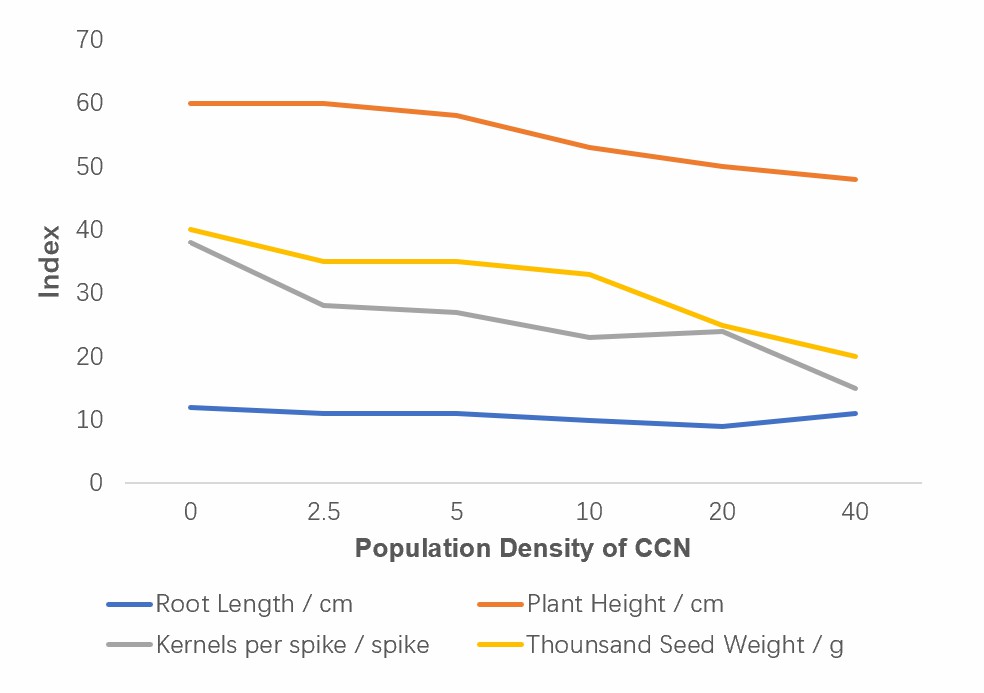Cereal cyst nematode (CCN) is a worldwide disease affecting wheat, barley, rye, oats, sorghum, and other cereal crops, as well as more than 40 kinds of grass such as purple fescue, oxtail grass, fescue. The cereal cyst nematode (Heterodera avenae Wollenweber) was first found on wheat in Britain in 1908 and was reported in Oregon in 1975. This nematode has been found in Europe, Canada, Australia, Africa, and other countries and can reduce wheat production by 30%-70% in severe cases.
Lifeasible develops an advanced platform equipped with advanced instruments and professional staff to analyze cereal cyst nematode diseases with a high standard. We customize featured services according to the customers' demand.
 Fig.1 Healthy cereal roots (left) and nematodes infected wheat roots (right).
Fig.1 Healthy cereal roots (left) and nematodes infected wheat roots (right).
 Fig.2 Statistics of changes of wheat indexes.
Fig.2 Statistics of changes of wheat indexes.
We provide a mechanism analysis of the harm caused by cereal cyst nematodes, mainly by robbing the host of nutrients, disrupting hormone balance, causing mechanical damage, and so on.
Lifeasible offers various services involving the analysis of cereal cyst nematode diseases to meet your research demands. With years of experience in plant science, our professional platforms can help our clients solve various difficulties. If you are interested in our services or have any questions, please feel free to contact us or make an online inquiry.
Lifeasible has established a one-stop service platform for plants. In addition to obtaining customized solutions for plant genetic engineering, customers can also conduct follow-up analysis and research on plants through our analysis platform. The analytical services we provide include but are not limited to the following:
STU-CRISPR System Improves Plant Genome Editing Efficiency
April 19, 2024
Application of Exosomes in Facial Beauty
April 12, 2024